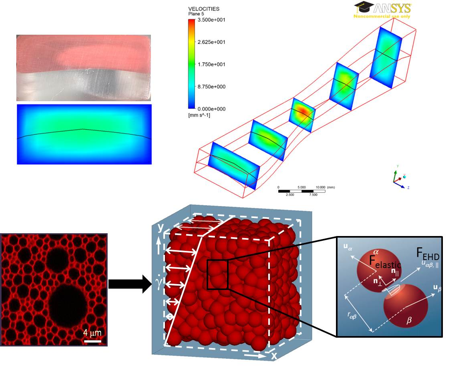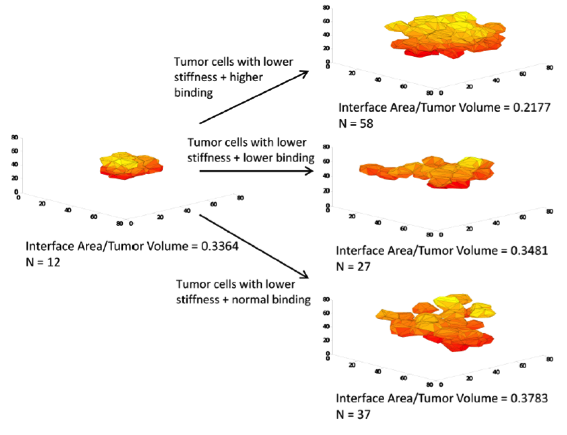Nanomanufacturing
Nanotechnology is a rapidly growing field with a plethora of novel applications, including mobile/flexible computing, light-emitting diodes, solar energy devices as well as microarrays for genomics, proteomics, and tissue engineering. Our group’s focus is in developing tools that enable the reliable, low-cost manufacture of these technologies at industrial scales. In order to achieve this goal, we are exploring improvements to current lithographic techniques as well as new self-assembly strategies for particles at the nanoscale. To this end we use both atomistic and continuum simulations supplemented with theory and experiment as needed.
Soft Matter Rheology
Soft matter forms a broad family comprising of materials like polymers, emulsions, colloids and foams whose behavior falls in between that of purely elastic solids and Newtonian liquids. These multi-scale materials are used in a wide range of areas including food, cosmetics, mineral processing, packaging, solar cells, drug delivery, high performance coatings and oil industries. Our focus is on creating tools to connect their multi-scale dynamics, structure and rheology, to efficiently design and process these materials for current and future applications. We mathematically model and simulate the multi-layer coextrusion of polymers to understand how it can be used to process materials with a wide range of rheology to create high quality micro and nano layered structures with unique properties. We develop formulations of pH sensitive polymers and create mathematical models for them to be used in wellbore applications to block fractures and leakage paths along the reservoir. We also develop micromechanical 3D simulations and pairwise theories to establish a quantitative connection among the constituent properties, microstructural changes and macroscopic properties of soft glassy materials like concentrated microgels and compressed emulsions.
Biomedical Micromechanics
Biomedical research into widespread, potentially fatal health problems like cancer and stroke is being performed. Emphasis is placed upon the extremely important micro-scale mechanics behind biological phenomena and their potential treatments. Working at the micron level is highly suitable for dealing with cellular interactions and mechanical properties as well as for small regions of tissue to examine tissue dynamics. This focus would be beneficial, for example, in thoroughly understanding tumor growth so that it can be stopped or prevented. Furthermore, the circulatory and respiratory systems of humans and animals can be considered natural microfluidics. Such insight into fluid mechanics would be helpful for studies in areas like intravenous delivery of thrombolytics to treat stroke. Mechanical analysis of biological systems on the micro-scale is ideal as it is small enough that a physical interpretation can be utilized over a biological one, while still large enough that the most important factors are not neglected.
Emphasis is placed upon the extremely important micro-scale mechanics behind biological phenomena and their potential treatments. Working at the micron level is highly suitable for dealing with cellular interactions and mechanical properties as well as for small regions of tissue to examine tissue dynamics. This focus would be beneficial, for example, in thoroughly understanding tumor growth so that it can be stopped or prevented. Furthermore, the circulatory and respiratory systems of humans and animals can be considered natural microfluidics. Such insight into fluid mechanics would be helpful for studies in areas like intravenous delivery of thrombolytics to treat stroke. Mechanical analysis of biological systems on the micro-scale is ideal as it is small enough that a physical interpretation can be utilized over a biological one, while still large enough that the most important factors are not neglected.


